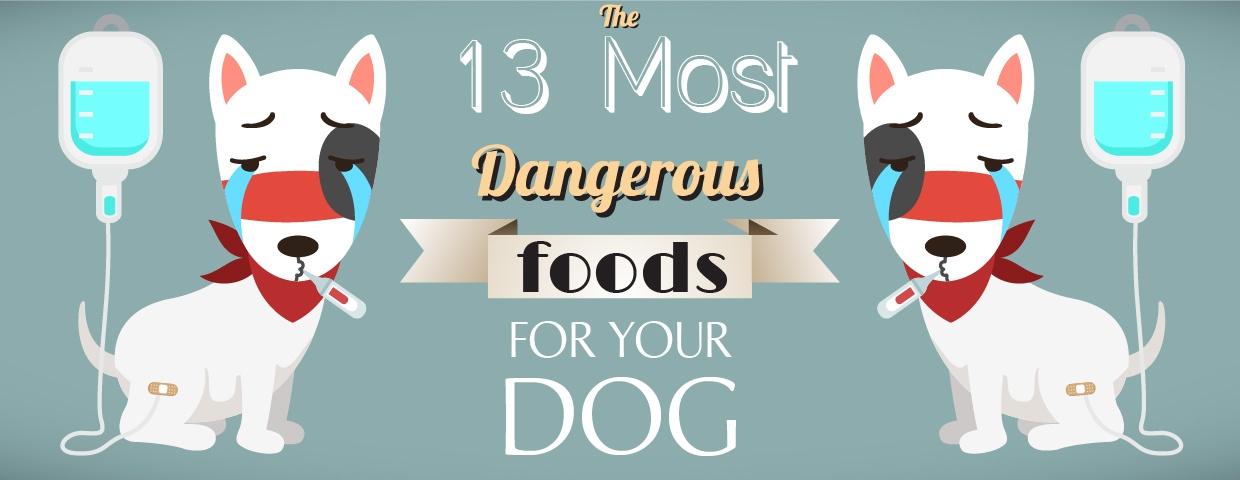
We have all been there, sitting at the dinner table or watching a movie on the couch, and there they are- ever present and always adorable. Big brown eyes, head tilted slightly, brow and ears perked up, just begging for an unwanted scrap or small piece of whatever goodness you’re eating.
But don’t. Just don’t.
Many of the foods we enjoy every day can have dire consequences for your four-legged friend. Below are the 13 most dangerous foods for your dog and what can happen if eaten.
 High-fat foods are not good for anyone. But they’re even more dangerous for pets. Fatty foods cause:
High-fat foods are not good for anyone. But they’re even more dangerous for pets. Fatty foods cause:
Breeds such as Miniature Schnauzers, Shetland Sheepdogs, and Yorkshire Terriers are even more susceptible to pancreatitis than other breeds. So when those sad eyes are staring up at you from below the dinner table, don’t give into the temptation to share your leftover food that is loaded with fat.
Ever heard the phrase “Milk, it does a body good”? Well, not for Fido. The main reason is that dogs in general are not able to breakdown lactose, which is two sugar chemicals linked together. Canines do not possess lactase, the enzyme that breaks down lactose during the digestive process.
If your pooch ingests any kind of dairy, you will see symptoms of:
 Dogs can’t live with it; humans can’t live without it. Both dogs and cats are far more sensitive to caffeine than humans are. Caffeine is toxic to their heart and nervous system, no matter the breed. Coffee, tea, energy drinks, or basically anything containing caffeine should never be given to your dog.
Dogs can’t live with it; humans can’t live without it. Both dogs and cats are far more sensitive to caffeine than humans are. Caffeine is toxic to their heart and nervous system, no matter the breed. Coffee, tea, energy drinks, or basically anything containing caffeine should never be given to your dog.
When it comes to mushrooms, it’s hard to know which ones are toxic and which ones are not. Luckily, out of the thousands of mushroom types, only around 100 or so are poisonous.
When taking your canine for a walk, or to a new park, be aware of what is growing in the area. Symptoms of consumption are not always immediate.
If you know your dog has ingested a mushroom, call your veterinarian right away and attempt to get a sample of the mushroom (we recommend using gloves for your safety) for referent.
Consuming mushrooms can cause:
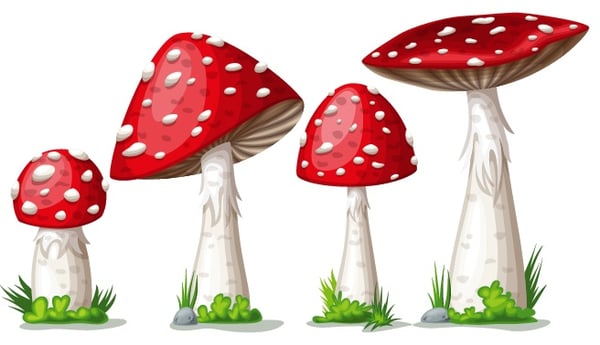
All types of chocolate contain fat, caffeine, and a substance known as theobromine. Humans can metabolize chocolate very easily, but dogs cannot. Because the chocolate lingers in their digestive systems, it builds up to toxic levels. Dark and rich chocolate (i.e. baker’s chocolate, cocoa and dark cocoa) can be risky because they tend to contain more ingredients that are toxic to your dog.
 Depending on the type and amount of chocolate your dog eats, they could experience:
Depending on the type and amount of chocolate your dog eats, they could experience:
The good news is that you get to keep all the chocolate for yourself without feeling guilty!
All of these can cause kidney failure because of an unknown toxin they contain. Do not mess around with these foods as they are deadly to dogs. The seeds and pits can cause small intestinal inflammation or obstruction, and also contain cyanide, which is poisonous to both you and your pet.
It is important to get your dog to your veterinarian as soon as you notice these symptoms.
Walnuts are one of the most common nut poisonings, according to Nationwide pet insurance. They say the average cost to treat walnut poisoning is $419 and the average cost to treat liver failure is $720. Walnuts contain a toxin called tremorgenic mycotoxins that canines cannot digest.
 Macadamia nuts, on the other hand, contain an unknown toxin that can cause seizures or neurological problems.
Macadamia nuts, on the other hand, contain an unknown toxin that can cause seizures or neurological problems.
Dogs love the taste of almonds and pistachios, so if they can smell the nuts, chances are they will hunt them down. Besides being a choking risk or get caught in the intestinal tract, they are also very high in fat, which is hard on their digestive system.
If any of these nuts are consumed, your furry friend could become:
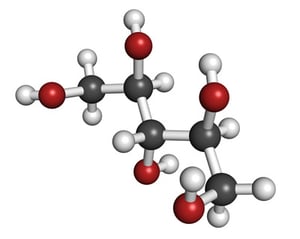 This is a sugar substitute commonly found in toothpaste, mouthwash, sugarless gum, some cough medicines, and children’s chewable multi-vitamins. It’s also used in baked goods and sugarless candies. We humans have the ability to digest the chemical because it acts like a sugar alcohol. Canines do not have the ability to break down the compound in their system, thus causing toxic levels to rise very quickly.
This is a sugar substitute commonly found in toothpaste, mouthwash, sugarless gum, some cough medicines, and children’s chewable multi-vitamins. It’s also used in baked goods and sugarless candies. We humans have the ability to digest the chemical because it acts like a sugar alcohol. Canines do not have the ability to break down the compound in their system, thus causing toxic levels to rise very quickly.
Ingestion can cause rapid release of insulin, resulting in hypoglycemia and its symptoms, such as:
One stick of gum containing xylitol can cause these issues in a 20-pound dog.
Onions contain thiosulphate, which is toxic to dogs and cats. Even in small amounts, onions can cause the red blood cells circulating through your pet’s body to burst. Garlic, chives, and leeks are also poisonous to dogs and cats alike. Garlic is up to five times more potent as onions, causing oxidative damage to the red blood cells, as well as an upset stomach.
Other signs of anemia are:
Onion and garlic poisoning may have a delay of symptoms for several days.
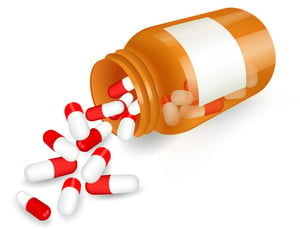
Tylenol (Acetaminophen), Aspirin, and Advil (Ibuprofen)—while these pain relievers can be safely given to pets under veterinary care and instruction, toxic levels can be reached unintentionally. While those child proof caps help keep your kids out, dogs can chew through plastic bottoms and easily overdose. Keep all of those medications carefully stored for the sake of both your human children and your fur babies. NEVER give acetaminophen to a cat. Even the smallest amount given to a cat is highly toxic and fatal.
 Raw bones are great for your dog’s chewing pleasure. What makes bones dangerous to your canine companion is, when they are cooked, the fibers in the bones are weakened and if ingested can cause stomach lacerations when the bone splinters. As yummy as bones may look, don’t let your dog have that left over bones.
Raw bones are great for your dog’s chewing pleasure. What makes bones dangerous to your canine companion is, when they are cooked, the fibers in the bones are weakened and if ingested can cause stomach lacerations when the bone splinters. As yummy as bones may look, don’t let your dog have that left over bones.
Avocados bring so many benefits to us Humans. Not the case with for your pets. This fatty fruit (yes, it is a fruit) contains persin, and too much persin is poisonous to dogs and other pets. If you grow avocados at home, keep your pets away from the leaves, seed, and bark, as well as the avocado itself.
While some may think that giving their dog a cold one is harmless fun, it’s not. Alcohol is absorbed into the bloodstream and affects pets faster than you or me. If a canine consumes alcohol, their blood sugar, blood pressure, and body temperature drops to dangerous levels. Intoxicated dogs can experience
And that is no laughing matter.
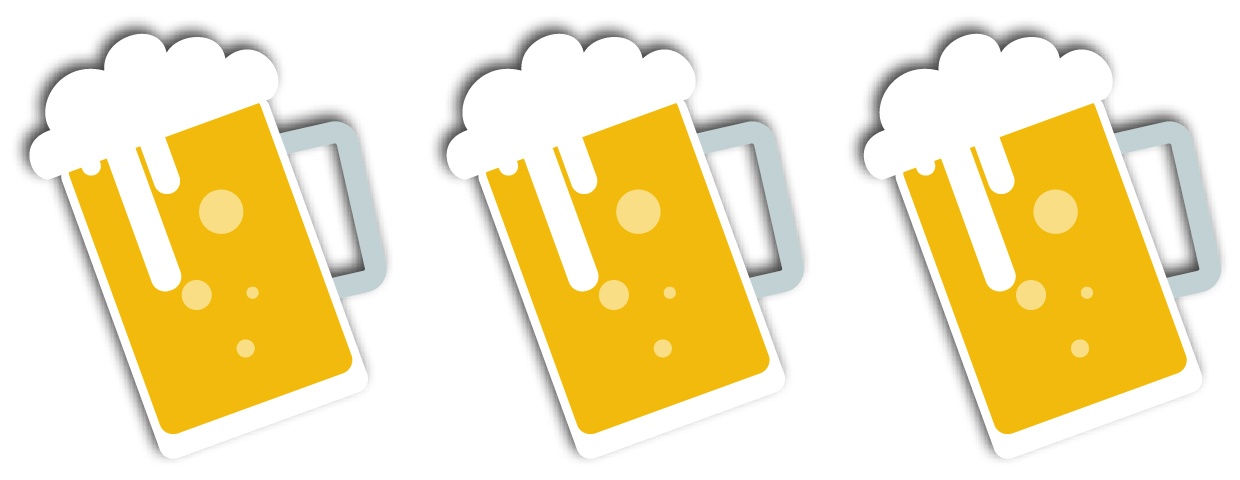
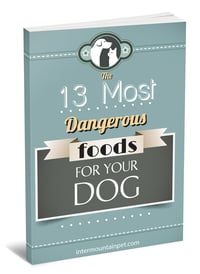
While every loving pet owner wants to sneak treats every now and then, it’s a good idea to stick with what your veterinarian recommends and avoid any tummy trauma or unnecessary trips to the emergency clinic.
Want a copy of this ebook for yourself? Fill out the form and we'll email you a copy.